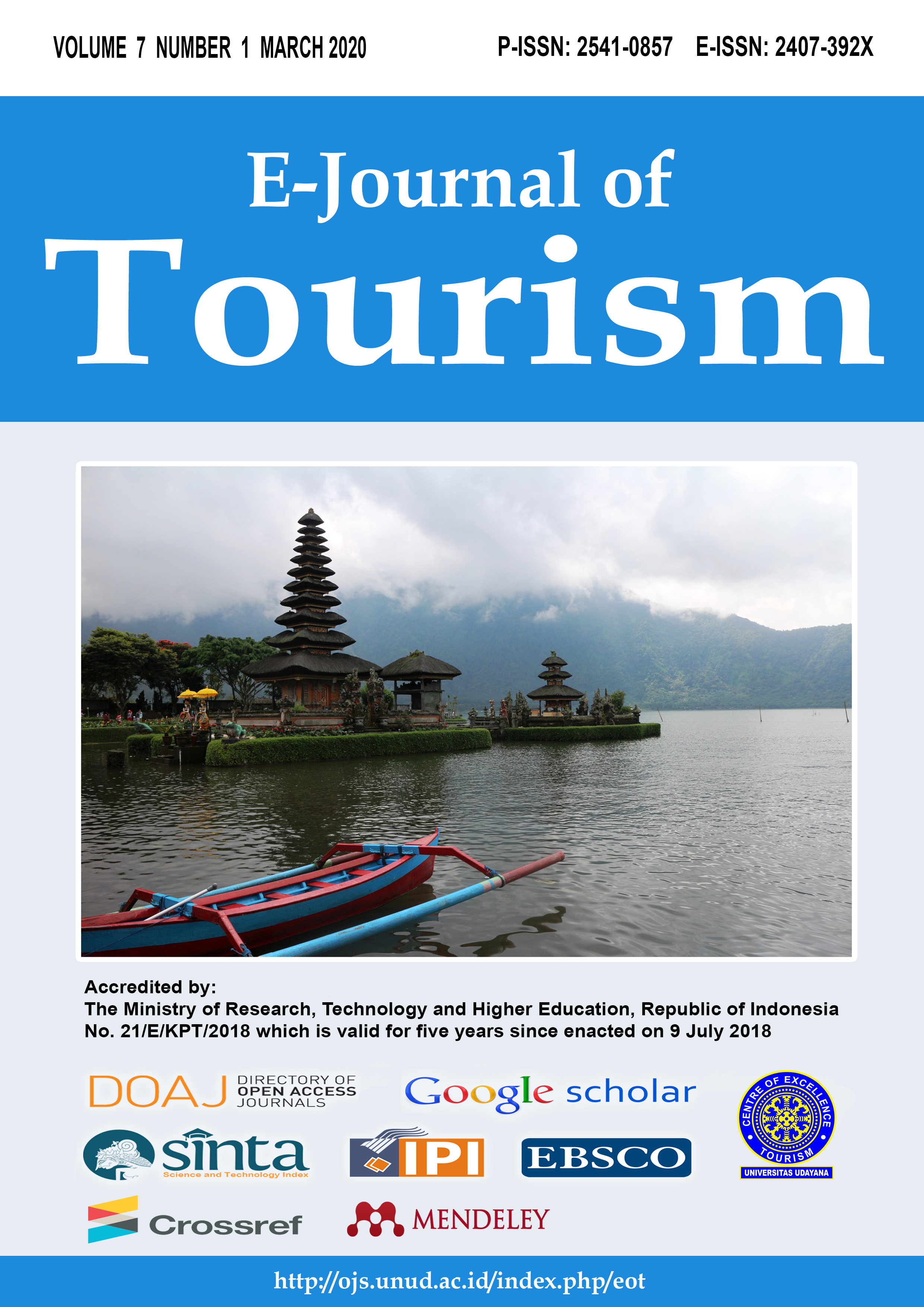Digital Surveillance of Health and Safety Hazards at Tourist Attractions in Bali: First Preliminary Evidence
Abstract
This study examined the feasibility of conducting digital surveillance of health and safety hazards through a system that can be accessed by travelers using their mobile phones. A progressive mobile website and a mobile application were developed employing a research database which consists of hazards, risks and health facilities that have been geo-tagged and mapped based on their respective geographical positions in 197 tourist attractions in Bali. The system was launched in 80 strategic tourist attractions in Bali at the end of August 2019. Trends in some specific diseases, hazards, and risks were observed monthly using a keyword analysis. Serial data for the first four months were analyzed and presented descriptively. The result shows that in total there were 19,869 visits to the website, or an average of 163 visits per day. There has been a nearly three-fold increase in total website traffic from 85.2 in September to 245.8 in December 2019. Safety hazard is the most frequently visited pages by tourists and there were 45 valid keywords found in the website panelboard. This study is the first to examine the possibility of developing a digital surveillance system using mobile phones directly involving travelers at destinations.
Downloads
References
Freedman, D., Kozarsky, P. E. and Weld, L. H. (1999) ‘GeoSentinel: The Global Emerging Infections Sentinel Network of the International Society of Travel Medicine’, Journal of Travel Medicine, 6(2), pp. 94–98.
ISTM (2019) GeoSentinel. Available at: http://www.istm.org/geosentinel (Accessed: 28 March 2019).
Nsoesie, E. O. et al. (2015) ‘New digital technologies for the surveillance of infectious diseases at mass gathering events’, Clinical Microbiology and Infection. Elsevier Ltd, 21(2), pp. 134–140. doi: 10.1016/j.cmi.2014.12.017.
Reid, D., Keystone, J. S. and Cossar, J. H. (2001) ‘Health Risks Abroad: General Considerations’, in DuPont, H. L. and Steffen, R. (eds) Textbook of Travel Medicine and Health. 2nd edn. Hamilton, London: B.C Decker Inc., pp. 3–9.
Talbot, E. A. et al. (2010) ‘Travel medicine research priorities: establishing an evidence base.’, Journal of Travel Medicine, 17(6), pp. 410–5. doi: 10.1111/j.1708-8305.2010.00466.x.
WHO (2008) International Health Regulations 2005. 2nd edn. Geneva: World Health Organization.
Wirawan, I. M. A. et al. (2017) Kesehatan dan Keselamatan Wisata: Direktori Hazard, Risiko, dan Layanan Kesehatan Wisata di Bali. 1st edn. Yogyakarta: Andi Publishing.
Wirawan, I. M. A. (2018) ‘Healthy tourism initiatives at destinations: opportunities and challenges’, Public Health and Preventive Medicine Archive, 6(1), pp. 1–3. doi: 10.15562/phpma.v6i1.1.
Wirawan, I. M. A. et al. (2020) ‘Travel agent and tour guide perceptions on travel health promotion in Bali.’, Health Promotion International, 35(1), pp. e43–e50. doi: 10.1093/heapro/day119.
World Health Organization (2019) WHO guideline: recommendations on digital interventions for health system strengthening. Geneva: World Health Organization.
Wu, Z. and McGoogan, J. M. (2020) ‘Characteristics of and Important Lessons From the Coronavirus Disease 2019 (COVID-19) Outbreak in China’, JAMA, 323(13), p. 1239. doi: 10.1001/jama.2020.2648.

This work is licensed under a Creative Commons Attribution 4.0 International License.
The copyright of the received article shall be assigned to the journal as the publisher of the journal. The intended copyright includes the right to publish the article in various forms (including reprints). The journal maintains the publishing rights to the published articles.




















